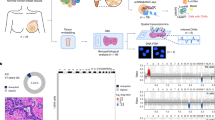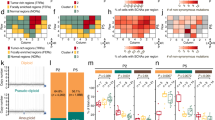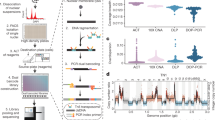Abstract
DNA Ploidy and S phase fraction (SPF) were measured in Stage I and II breast cancers from patients with at least 8 years of follow-up, to assess the prognostic significance of these data. Disaggregated sections of formalin-fixed, paraffin-embedded tumour were analysed by flow cytometry. SPF was calculated using a rectangular model of S phase, after subtraction of background debris using an exponential model. 64% of tumours were DNA aneuploid. The median SPF was 4.5% for DNA diploid, and 10.9% for DNA aneuploid tumours. There were small reductions in survival at 10 years for DNA aneuploid tumours, and for tumours with above median SPF, but these were not statistically significant. The relative hazard for DNA aneuploid tumours was 1.20 (95% CI 0.81-1.76), and for high SPF was 1.31 (95% CI 0.87-1.98). Neither factor was statistically correlated with survival in multivariate analysis. Technical and theoretical factors limit the accuracy and reproducibility of flow cytometric data, and may explain the lack of prognostic information given.
This is a preview of subscription content, access via your institution
Access options
Subscribe to this journal
Receive 24 print issues and online access
$259.00 per year
only $10.79 per issue
Buy this article
- Purchase on SpringerLink
- Instant access to full article PDF
Prices may be subject to local taxes which are calculated during checkout
Similar content being viewed by others
Author information
Authors and Affiliations
Rights and permissions
About this article
Cite this article
Stanton, P., Cooke, T., Oakes, S. et al. Lack of prognostic significance of DNA ploidy and S phase fraction in breast cancer. Br J Cancer 66, 925–929 (1992). https://doi.org/10.1038/bjc.1992.387
Issue date:
DOI: https://doi.org/10.1038/bjc.1992.387
This article is cited by
-
Outcome and Human Epithelial Growth Factor Receptor (HER) 1-4 status in invasive breast carcinomas with proliferation indices evaluated using bromodeoxyuridine (BrdU) labelling
Breast Cancer Research (2004)
-
DNA ploidy analyses in 218 consecutive Pakistani breast cancer patients: Does it add anything?
Pathology & Oncology Research (2001)
-
The prognostic significance of DNA ploidy in adenocarcinomas of the esophagogastric junction
Journal of Cancer Research and Clinical Oncology (1996)
-
Analysis of DNA and morphometry in breast carcinoma
Histochemistry and Cell Biology (1996)



